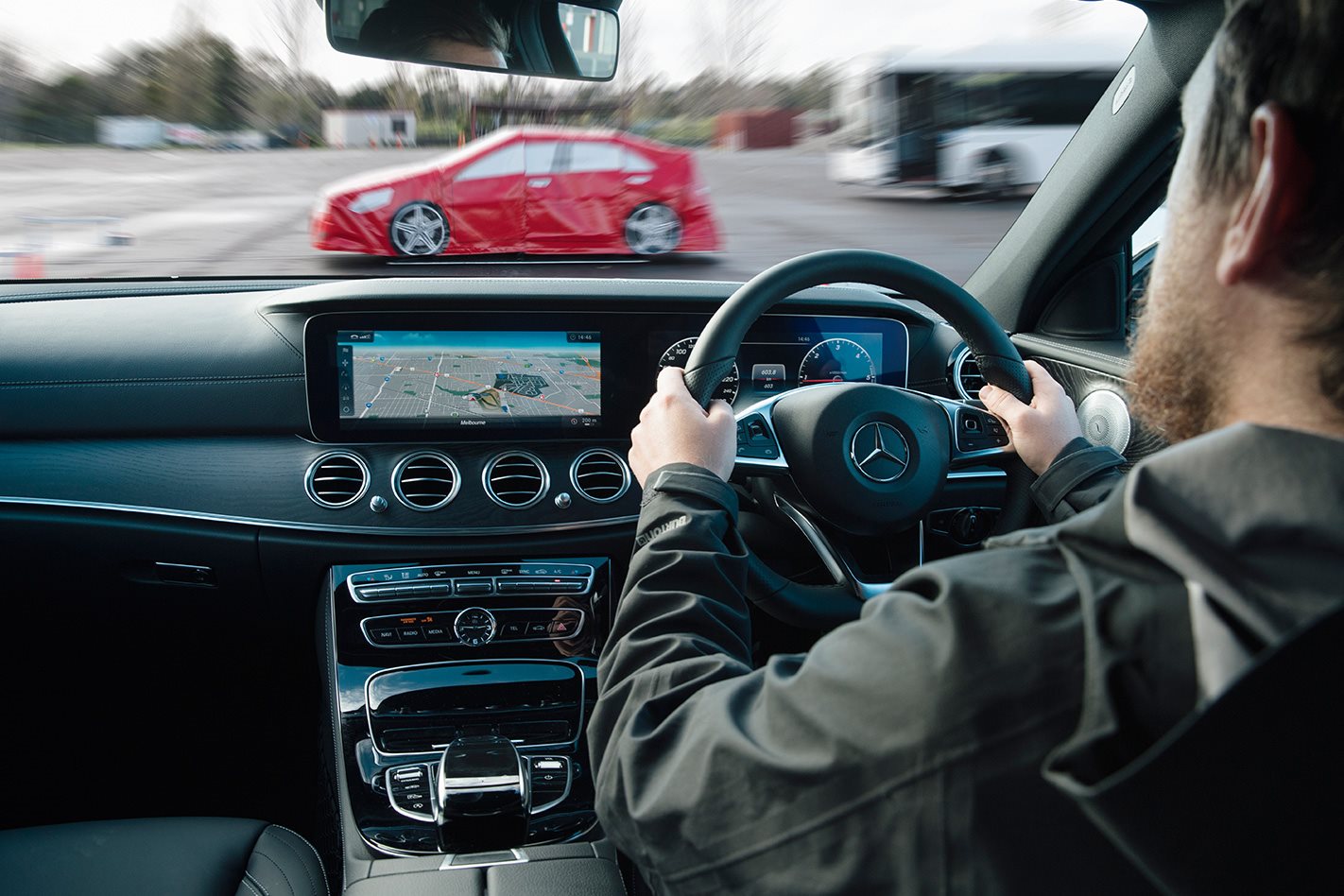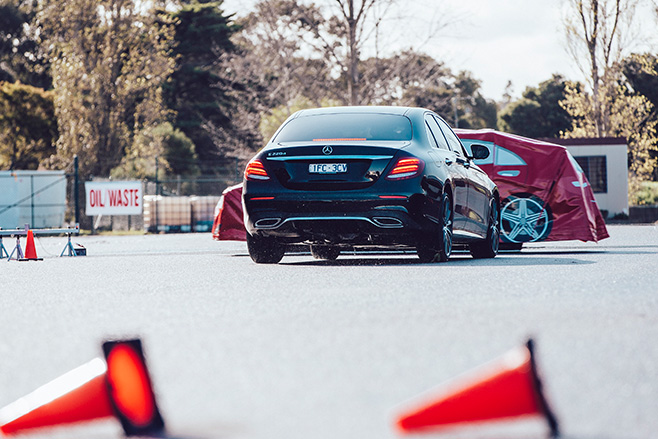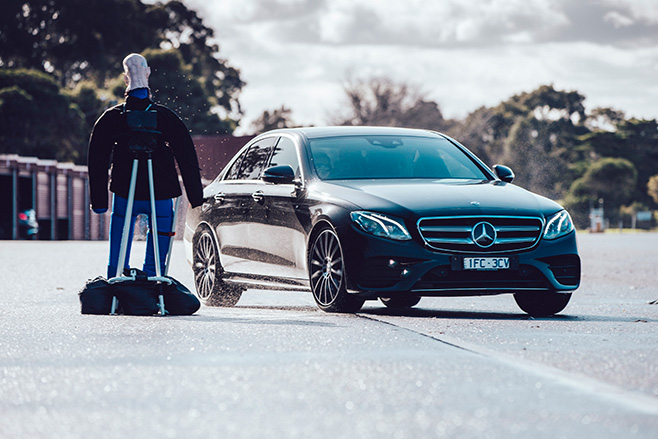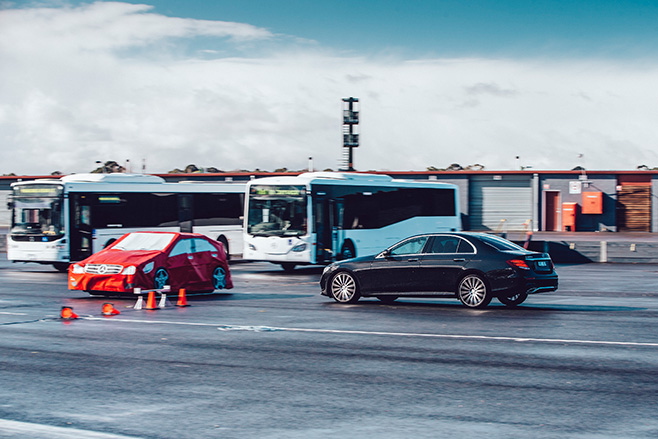
By all accounts I should be okay with this, even loving it, but despite my awe at the technical genius behind it, I can’t mask my uneasiness.
Let’s take a step back.
It is the launch of the new range of Mercedes-Benz E Class plug-in hybrids, which come equipped with the latest in automated driver technology.
The endearingly Germanic engineer speaking at the launch stresses that this allows for automated and not autonomous driving; there’s a difference – not that the layman will care or understand – and I’m reminded that I’ll still need my wits about me.
Despite this, the car will accelerate, brake, steer, and even change lanes by itself at the touch of a button. It’s the kind of system traditionally reserved for the flagship ultra-luxurious Mercedes-Benz S Class.

This technology is cool, there is little doubt about that. Mercedes-Benz has clearly invested heavily in the systems they are providing as standard for Australians. On paper, and in the presentation, it all seems very straightforward. The car has an array of radars looking ahead and behind the vehicle which allows it to trundle along by itself, all you have to do is watch over it and step in when something unexpected happens. It all seems so easy, and more importantly, relaxing.
Importantly however, these are driver aids. It is designed to lighten the load of driving, not remove responsibility completely – a kind of halfway house into the future.
As part of the launch we are put in the driver’s seat, and taken on a loop which combines regular and highway driving in south eastern Melbourne. Walking to the cars I am palpably excited. As much as I love the experience of driving, without autonomous driving features, the future of the automobile is pretty bloody bleak. Cool tech which allows a car to travel without my input tickles my fancy as much as the much-maligned Ford Focus RS ‘Drift Mode’ – or so I thought.
Driving this E-Class is the popping of my automated vehicle cherry. Prior to sliding into its leather-clad seats, the closest I had come to a self-driving vehicle was good ol’ cruise control – none of this adaptive, lane-detecting business.

In the first part of the drive, I am in control: steering, accelerating, and braking are all done on my terms as the instructor in the passenger seat urges me to get a feel for the car. All’s going smoothly – literally. As we turn onto the highway onramp, the automated system is initiated, and with my hands only lightly gripping the wheel, and feet clear of the pedals, the Merc gradually builds speed to the 110km/h limit. A standard cruise control does the same, but the real test comes at the merge, which contains just a slight kink in the direction the road takes. It isn’t a huge deviation, but it’s enough of a kink that if you didn’t follow it, you would careen straight into the fast-flowing lanes of traffic on the highway, instead of the gentler merge that it’s designed to effect.
With the science behind the technology freshly explained and swirling in my head, I have full confidence the E-Class will navigate this smallest of directional changes with ease, and I will be able to initiate the auto-lane change while revelling in the masterfully designed tech.
Not so.

As the car approaches the slight kink, it continues on its established trajectory, only jerking itself in the right direction at the last moment with a soft ping and notification on the heads-up display. To its credit, the car never leaves the lane, and merges successfully, but my confidence is shattered. In my head the doubt floods in. It was a slight – but important – change of direction. One which myself, or any half-decent driver, would complete without even noticing. But the automated system had made it jerky, unsettling, and now I was the opposite of relaxed. It’s not a great start, but there’s now several kilometres of one of Australia’s best highways for the car to redeem itself ahead of us.
But then the second cage-rattler occurs. Just as I am beginning to enjoy the ability of the car to maintain a safe distance to the car ahead, a courier van decides it fancies the gap. The E-Class is travelling marginally quicker than the van – maybe only two or three kilometres an hour. The courier has his indicator on and is now moving into the gap, which is shrinking due to the difference in speeds. The Merc makes no indication of slowing down and carries on without a ping, or a boop, or any indication it recognises what is going on. I cannot be clearer in stating a collision was not imminent, not even slightly.

But the van had every right to the gap, was initiating its merge, and the Merc was closing the gap inconsiderately. I don’t like being inconsiderate, particularly behind the wheel of a car at 110km/h, so I tap the brake, take back control of the car, and leave the van breathing room to complete its lane change. I have no doubt the Merc would have done the same eventually, and without any collision, but in the split second decision I beat the machine, and did so without any jerkiness or unnerving pings.
Friends with no interest in cars were eager to hear my thoughts on automated driving – technology all of them yearn for to be common place. I explained it thus: It is like having a learner driver at the wheel. You have to keep your eyes on the road, and be aware of what is happening as if you are driving, but you don’t get to be the one determining when to brake and accelerate, or how smooth the steering input should be. Instead you sit there, letting the computer do all that while you watch over. I don’t know about you, but that is just about the opposite of relaxing for me. If you think of the system as a helping set of hands in these terms it does a decent job, but it can be unsettling.
As an unashamed member of Gen-Y I love new technology, and I love the tech behind Mercedes-Benz’s automated driving systems. I am eager to experience the next step, but at the moment, I am just not convinced.
Perhaps most importantly though, I don’t feel like letting a jerk drive the car while I sit in the pilot’s seat.




